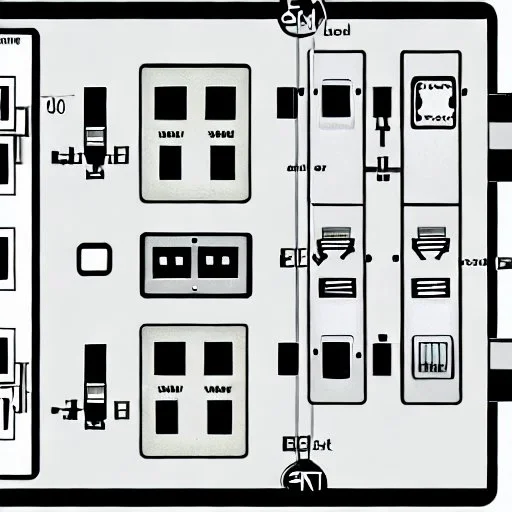July 19, 2025

Electrical switches are a crucial part of any electrical system and have a significant role in managing the electricity flow, ensuring safety, and facilitating efficient operation. There is a wide variety of electrical switches available for different applications. This article provides an overview of the common types of electrical switches, such as single-pole switches, double-pole switches, three-way switches, four-way switches, and push-button switches. Each type has its unique characteristics and advantages that one must consider while selecting a switch for a specific purpose. By comprehending these different types of electrical switches and their features, one can make an informed decision about which type suits their requirements the best.
Single-pole switches are electrically operated devices that use a single input to control an output. They are the most common type of switch and can be used to control a wide range of electrical appliances, from small household items like lamps to larger industrial machinery.
Single-pole switches come in different shapes and sizes, with various safety features depending on the type. Some may have extra grounding terminals for added protection against shocks or fire hazards, while others may have built-in fuses for further protection against overloads and short circuits. Additionally, single-pole switches can also have multiple poles for controlling multiple outputs at once.
All of these features make single-pole switches popular among both residential homeowners and commercial establishments.
A double-pole switch is a type of switch that is commonly used to control two separate circuits at the same time. It has two sets of contacts that can each control a different circuit, making it very versatile and useful in applications such as motor control, lighting, and HVAC systems. These switches are available in both single-throw and double-throw varieties, and can handle up to 240 volts AC and 20 amps. They come with multiple wall plates for easy installation in most standard electrical boxes, and are UL listed for safety assurance. Double-pole switches provide excellent protection against power surges and short circuits.
Three-way switches are a specialised type of electrical switch commonly used to control one or more lights from two different locations. They are an important tool for any electrician and can be incredibly useful in the home, allowing you to control multiple lights with just one switch.
Installing three-way switches can be relatively simple if the necessary wiring is already in place; however, it is important to ensure that the wiring is correct before installing the switches. Wiring three-way switches requires careful attention to detail and precision, as incorrect wiring can short circuit your electrical system or cause other problems.
Taking the time to understand how they work and properly wire them will ensure your safety and save you time and money in the long run.
Four-way switches are an alternative to the three-way switch, providing further control of one or more lights from multiple locations. Unlike the three-way switch, which is used in two locations and can turn a light on and off from both positions, four-way switches provide additional control from two more remote locations.
The four-way switch must be installed together with two three-way switches to provide the lights with multi-location installation capabilities. A benefit of this type of setup is that it allows for remote-controlled operation when connected to a home automation system that features Wi-Fi-enabled switching devices.
With this setup in place, users will be able to access their lighting systems remotely using their phone or tablet via an application on their device. This provides convenience and ease of use when controlling any lighting needs within the home environment.
Push-button switches offer an easy and intuitive way to control lighting in a home, providing a hassle-free and enjoyable experience. Unlike traditional switches, push-button switches are electrically operated and typically feature two contacts connected by a button or lever. When the button is pressed or lever is moved, the contacts close and electricity can flow through them. Push-button switches offer numerous benefits over traditional switches, including enhanced safety, greater convenience, and more reliable operation. They also require less maintenance since they have no moving parts that can wear out over time, making them an ideal choice for residential homes where convenience and reliability are essential for controlling lighting fixtures.
Electrical switches are a vital part of electrical systems, and it is crucial to understand their differences. Single-pole or double-pole switches offer simple on/off control, while three-way and four-way switches provide greater flexibility. Push-button switches offer a convenient option for users who need quick circuit access. Each type serves a specific purpose in different settings, making them essential components of any electrical system. Knowing which switch is suitable for a particular application can ensure that the system is efficient and safe. With knowledge of these various types of electrical switches, an individual can make informed decisions when selecting the best switch for their needs.